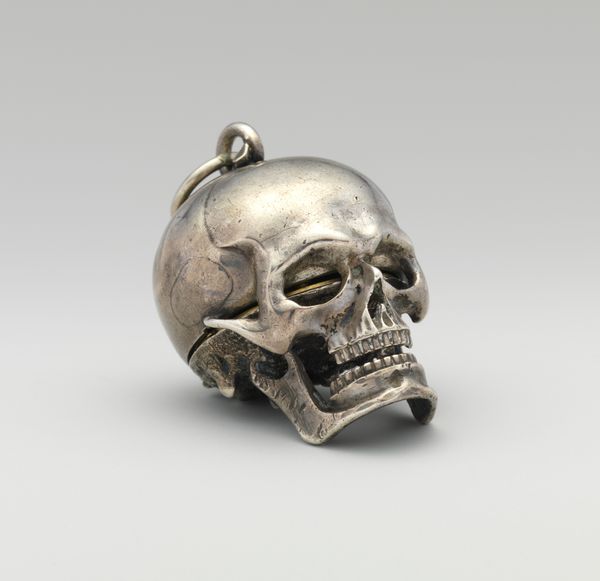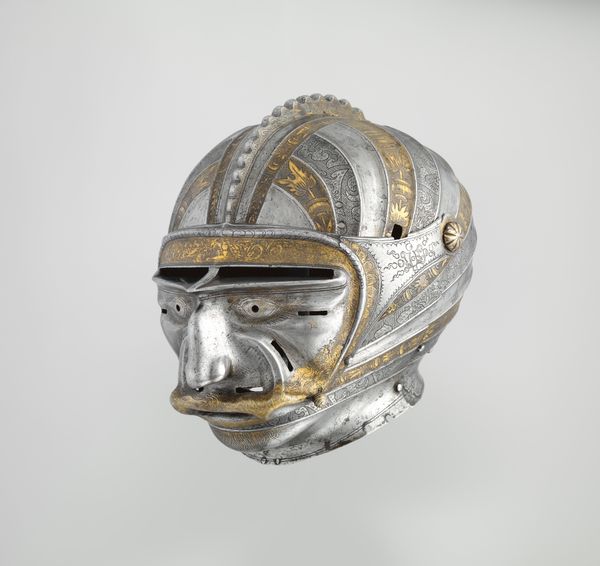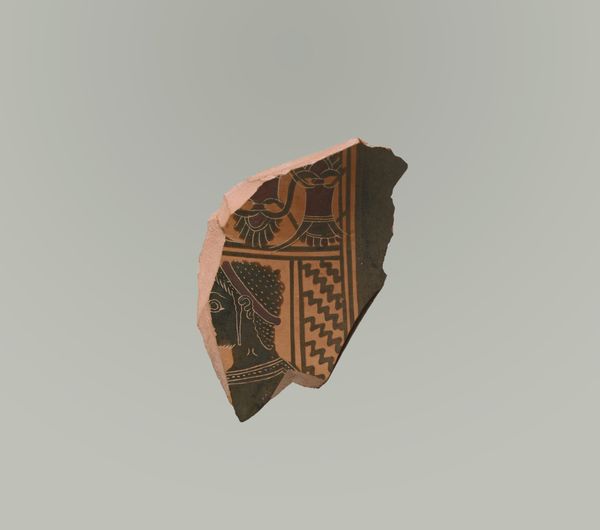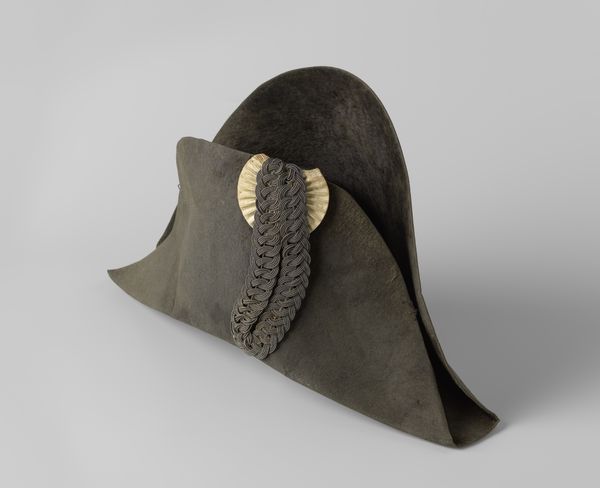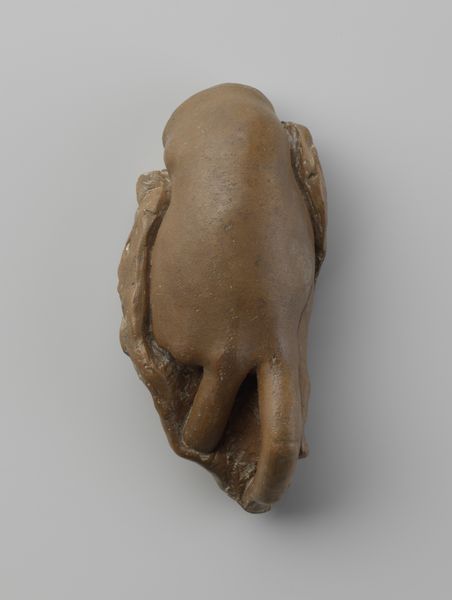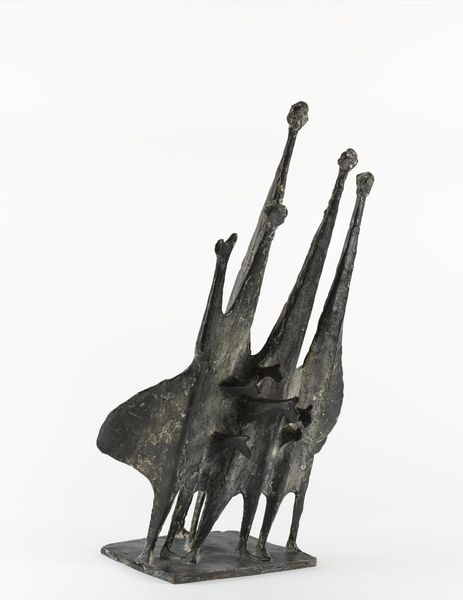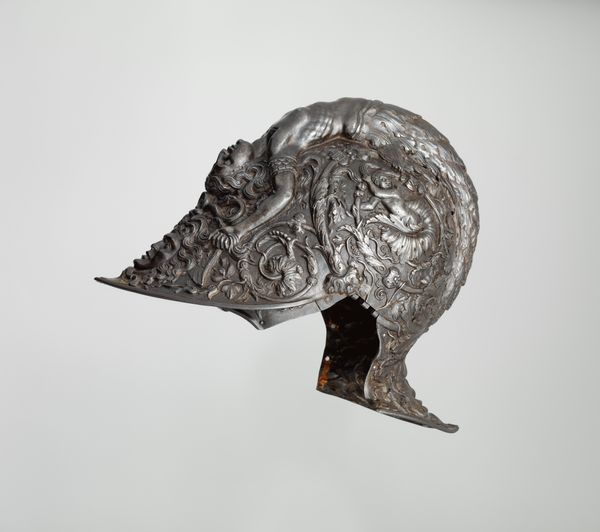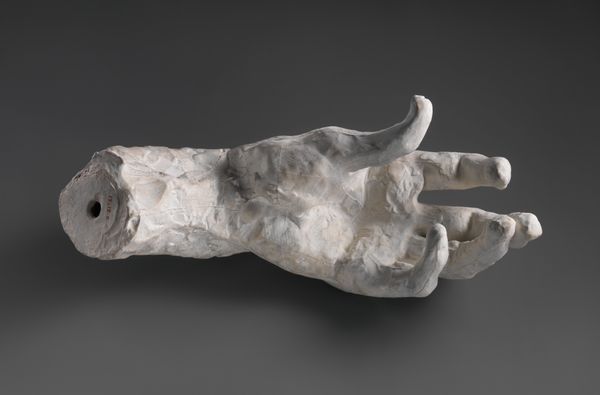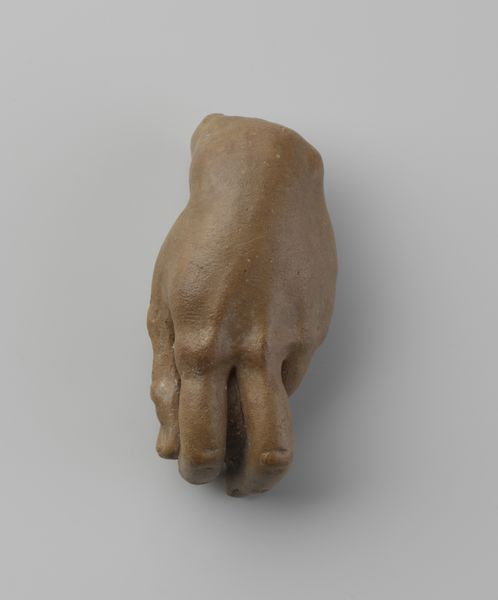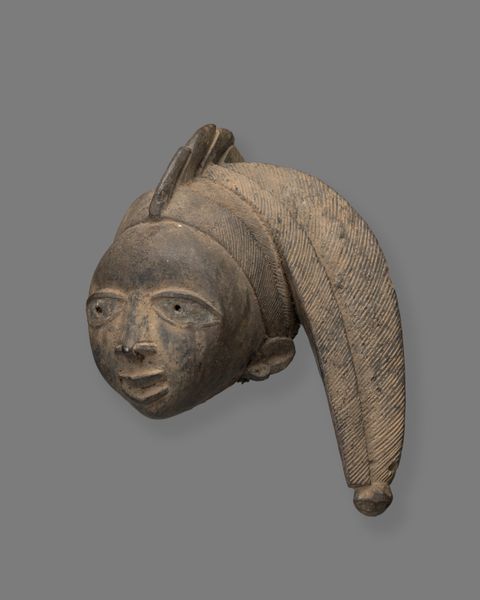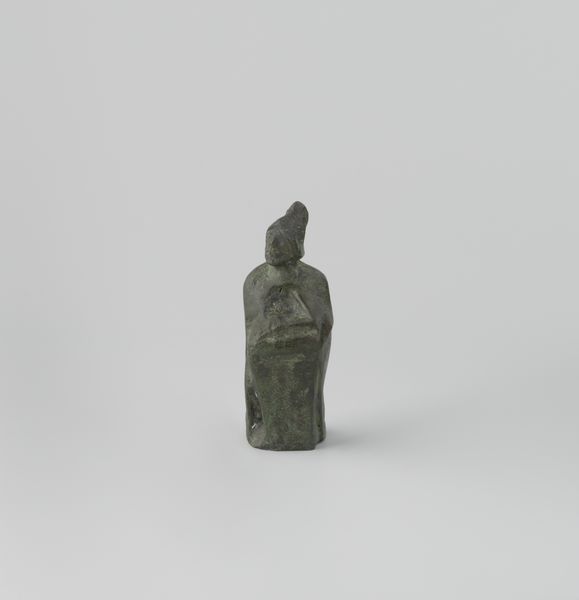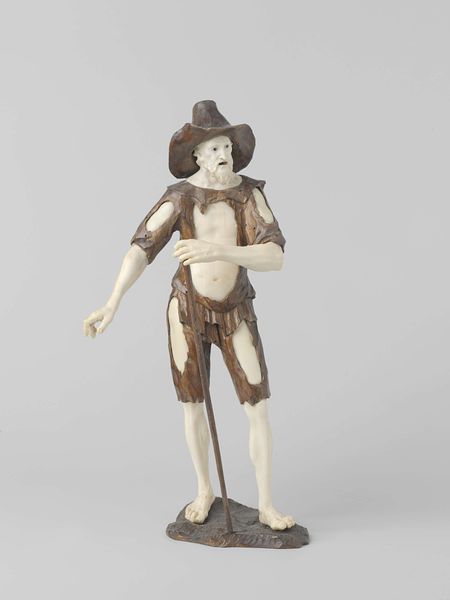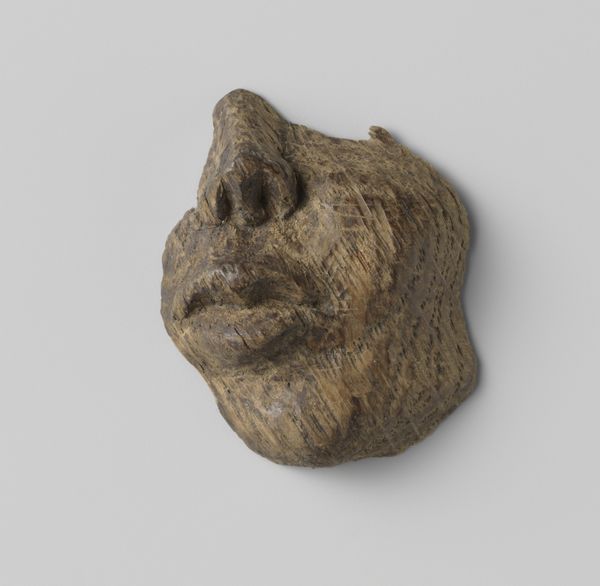
Dimensions: height 32 cm, width 25 cm
Copyright: Rijks Museum: Open Domain
Curator: Look at this striking metal sculpture from 1933 by Siem van den Hoonaard called "Satire on Modern Dance." What's your initial take? Editor: Brutal, almost like a machine twisted into the vague shape of a human face. The materiality dominates; I barely see "dance." It reads as pure critique. Curator: It's true. It feels raw, like the innards of something beautiful laid bare, mocking the art form it references. I find the abstraction poignant. Is it about deconstructing movement, stripping it of grace? Editor: Perhaps, but I see something more systematic. Look at the bolted joints, the visible construction. Van den Hoonaard is highlighting the mechanics, the labour that underpins any cultural production, be it dance or sculpture. Is the modern dance mechanized like an industrial process, not human like the ballets and theatrical spectacles of the period? Curator: A dance of cold hard labor. So this could be a satirical observation of modern mechanization or some other critical aspect of society itself reflected in the evolution of dance as art? Editor: Precisely. Remember, this is the interwar period; the machine age is in full swing. The choice of material, the overt construction—it all points to the influence of industrial production and consumption on all cultural forms. Curator: There's an irony there too. Turning something as cold as sheet metal into something seemingly soft through sculpting gives it an aesthetic. You know I have a dance background, so the dance of it is like an ode to what real work is? How we make art by the physical toll on our bodies in movement? Or that those who support labor help bring art forms like dance into view? The choice of material speaks volumes and can feel so poetic. Editor: The materiality does have such emotional capacity; that's what Van den Hoonaard brings out so forcefully! This sculpture offers a perspective on labor relations that goes beyond simple opposition, to bring dance from something romantic to back to reality. Curator: It certainly does, making you think beyond your first impression... it’s an unsettling sculpture, ultimately brilliant. Editor: Agreed. Art such as this makes us question what role dance is truly playing at any given point in society and who labors in the creation of what we often take as an expressive or aesthetic work.
Comments
rijksmuseum over 2 years ago
⋮
Each side of this mask portrays a different expression. The dancer Gerie Folmer (1901-1983) wore it for her performance Satire on Modern Dance. Modern dance arose early in the 20th century and became so popular as an alternative to classical ballet that Folmer could poke fun at it. Theatrical masks, often made from papier maché, were commonly used. However, a metal dance mask, made by a goldsmith, is unique.
Join the conversation
Join millions of artists and users on Artera today and experience the ultimate creative platform.
